In today’s digital age, email remains one of the most effective tools for professional communication. Whether you’re reaching out to a potential client, introducing yourself to a new colleague, or seeking a collaboration opportunity, crafting the perfect email introduction is crucial. A well-written introduction can open doors, establish connections, and pave the way for successful relationships. This comprehensive guide explores the importance of email introductions, unveils five hidden gem strategies to enhance your email communications, and highlights how Prism Reach, an innovative AI-powered SaaS solution, can elevate your email marketing efforts through deep personalization.
Key Facts and Statistics
Understanding the impact of effective email introductions is supported by compelling statistics:
- Open Rates: Personalized email introductions can increase open rates by up to 50% compared to generic messages.
- Response Rates: Emails with tailored introductions see a 30% higher response rate.
- Engagement: Engaging email introductions can boost overall email engagement by 25%.
- Conversion: Well-crafted introductions contribute to a 20% increase in conversion rates.
- Trust Building: 70% of consumers feel more connected to brands that provide personalized content.
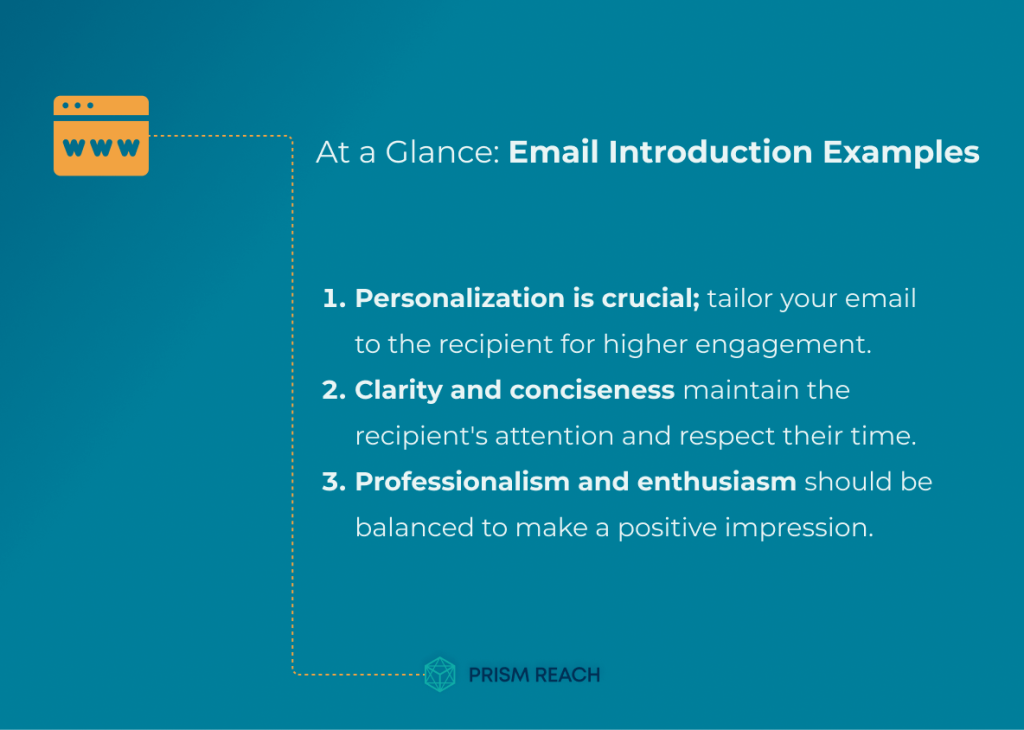
Upgrade Your Email Marketing with AI Personalization!
Joe Chernov
Good Marketing makes the company look smart. Great Marketing makes the customer feel smart.
Comparison: Email Introduction Examples
1. Professional First Impression
- Advantages:
- Positive Impact: Establishes a strong initial image and conveys the email’s intent quickly.
- Tailored Messaging: Allows customization to match the recipient’s context.
- Time-Saving: Provides a concise, written record that saves time for both sender and recipient.
- Disadvantages:
- Impersonal Feel: May come across as too formal or generic, lacking non-verbal cues.
- Risk of Misunderstandings: Without facial expressions or tone, nuances can be lost.
2. Builds Connections
- Advantages:
- Networking & Relationship Building: Helps in reaching a broad audience and facilitates introductions of new team members or partners.
- Enhanced Engagement: Personalized content can increase interaction and foster a sense of community.
- Formal Record Keeping: Maintains a documented trail of interactions that supports follow-up.
- Disadvantages:
- Volume Challenges: High email volume can lead to messages being overlooked or ignored.
- Spam Risk: If not crafted well, connection emails might be perceived as spam.
3. Flexible Timing
- Advantages:
- Convenience: Emails can be read at the recipient’s convenience, supporting asynchronous communication.
- Consistency: Provides a uniform introduction format that can be scaled for mass communication.
- Professional Tone: Maintains a consistent style and increases visibility within an organization.
- Disadvantages:
- Overwhelming Frequency: Too many emails may overwhelm recipients.
- Lacks In-Person Nuance: Misses the immediacy and personal touch of face-to-face meetings.
4. Improves Engagement
- Advantages:
- Clear Purpose: Clearly states the communication’s purpose, which can smooth transitions and encourage collaboration.
- Showcases Achievements: Allows the sender to highlight key accomplishments that may open doors to further opportunities.
- Disadvantages:
- Over-Formality: Excessive formality may overshadow the core message if the writing style is too rigid.
- Writing Quality Dependent: The effectiveness relies heavily on how well the content is written.
5. Clear Communication
- Advantages:
- Focused Messaging: Ensures that the core message is delivered without ambiguity.
- Efficient Response: Facilitates straightforward replies and reduces the risk of misunderstandings.
- Improved Efficiency: Helps keep communications on track, saving time for all parties involved.
- Disadvantages:
- Briefness Risk: Being too concise may omit important nuances that are better conveyed in person.
- Lack of Depth: Without additional context, emails might seem too transactional.
6. Personalized Content
- Advantages:
- Attention-Grabbing: Customized content can capture the recipient’s interest effectively.
- Stronger Relationships: Demonstrates genuine interest and effort, which can lead to deeper connections.
- Increased Response Rates: Personal touches often encourage higher engagement and quicker responses.
- Disadvantages:
- Time Intensive: Requires additional effort to tailor content for each recipient.
- Risk of Intrusiveness: Over-personalization might feel intrusive if not balanced properly.
7. Efficient Introduction
- Advantages:
- Quick Information Delivery: Provides essential details rapidly, setting clear expectations.
- Smooth Onboarding: Facilitates a seamless introduction process for new team members or partners.
- Consistency: Ensures that every introductory email follows a structured format.
- Disadvantages:
- Lack of Context: Brief introductions may omit detailed background information.
- Not Universally Applicable: Some communication styles or situations may require more in-depth context.
8. Enhances Professionalism
- Advantages:
- Credibility: Conveys competence, structured information sharing, and builds trust.
- Formal Communication Norms: Supports a formal approach that may be preferred in professional settings.
- Consistency: Maintains a consistent brand image and professional tone across all communications.
- Disadvantages:
- Overly Formal: Can limit more casual or creative interactions that might be beneficial in certain contexts.
- Reduced Relatability: A very formal tone may sometimes hinder personal rapport or warmth.
This comparison demonstrates that while each element plays a crucial role in effective email communication—ranging from establishing a professional image to building meaningful connections—they also come with trade-offs that need to be carefully balanced depending on your communication goals and audience.
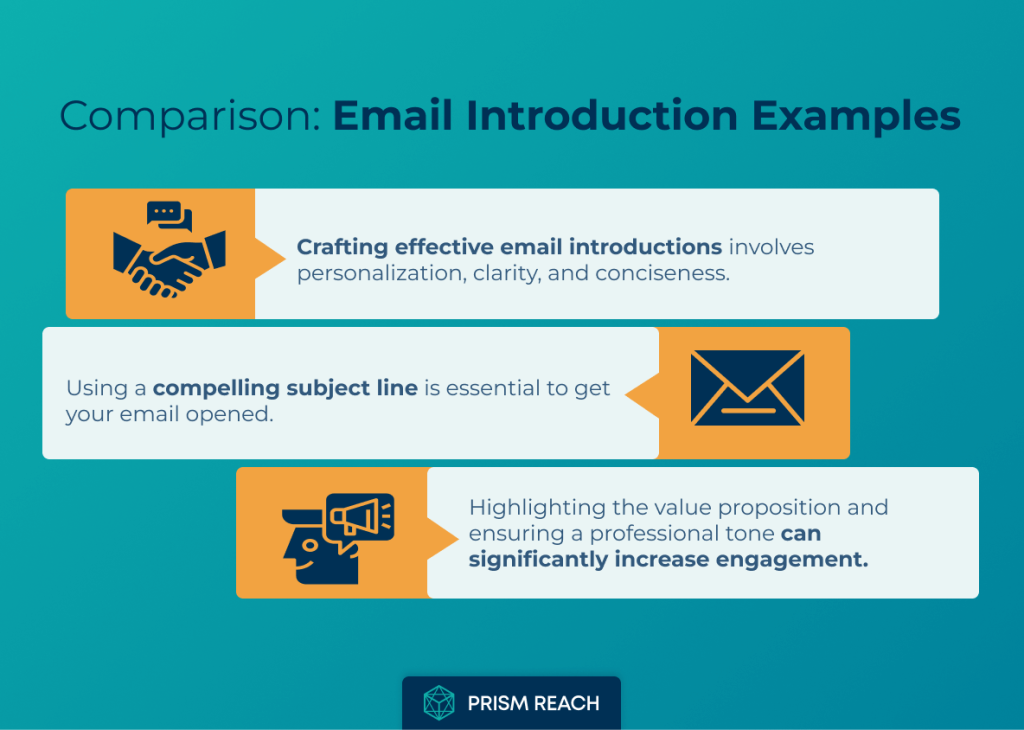
5 Hidden Gem Strategies for Email Introduction Examples
Maximizing the impact of your email introductions requires innovative strategies that go beyond conventional approaches. Here are five hidden gem strategies that can significantly enhance your email marketing efforts:
1. Personalize with Contextual Relevance
Strategy: Start your email with a reference to a recent event, article, or interaction relevant to the recipient.
- Effectiveness: High; contextual relevance shows that you’ve done your homework and care about the recipient’s interests.
- Obscurity: Many email introductions focus solely on the sender’s agenda rather than connecting with the recipient’s current context.
- Ease of Implementation: Requires research on the recipient but can be easily integrated into the introduction.
- Uniqueness: This approach makes the email feel tailored and thoughtful, increasing engagement chances.
Example: “Hi [Recipient’s Name], I recently read your article on sustainable marketing practices and was impressed by your insights. I wanted to reach out to discuss how our services can complement your efforts in this area.”
Prism Reach Integration: With Prism Reach’s AI-powered personalization, you can automatically insert contextual references based on the recipient’s recent activities and interactions, ensuring each introduction is relevant and engaging.
2. Use a Storytelling Approach
Strategy: Begin with a brief anecdote or story that relates to the purpose of your email.
- Effectiveness: High; storytelling captures attention and makes your message more relatable and memorable.
- Obscurity: While storytelling is common in marketing, it is less frequently used in direct email introductions.
- Ease of Implementation: Requires creativity but can be developed over time with practice.
- Uniqueness: This strategy differentiates your email from others that use standard formal introductions.
Example: “Last year, our team faced a challenge that transformed our approach to customer engagement. Inspired by that experience, I’m reaching out to share how our solutions can help your company overcome similar obstacles.”
Prism Reach Integration: Prism Reach can analyze past interactions and select relevant stories that resonate with each recipient, making your storytelling more effective and personalized.
3. Highlight Mutual Connections
Strategy: Mention any mutual connections or referrals early in your introduction to build trust.
- Effectiveness: High; referrals or mutual connections can significantly increase credibility and trustworthiness.
- Obscurity: Many emails fail to leverage existing relationships, which can enhance rapport.
- Ease of Implementation: Requires knowledge of your network but is straightforward when applicable.
- Uniqueness: This strategy establishes common ground quickly, making it easier for recipients to relate.
Example: “Hi [Recipient’s Name], [Mutual Connection’s Name] suggested I reach out to you regarding potential collaboration opportunities.”
Prism Reach Integration: Prism Reach can automatically identify and highlight mutual connections or shared networks, streamlining the process of building trust and rapport in your email introductions.
4. Utilize Social Proof
Strategy: Mention any notable achievements or testimonials related to your work or company early in your introduction.
- Effectiveness: High; social proof builds credibility and can pique interest in what you have to offer.
- Obscurity: Many marketers overlook this tactic in favor of simply stating their role or purpose.
- Ease of Implementation: Requires some research on achievements but is manageable within established templates.
- Uniqueness: This strategy leverages credibility without overtly selling, creating intrigue instead.
Example: “Hi [Recipient’s Name], I recently led a project that helped [Notable Client] increase their sales by 30%, and I believe our expertise can bring similar results to your company.”
Prism Reach Integration: Prism Reach can showcase relevant testimonials and achievements dynamically based on the recipient’s industry and interests, enhancing the effectiveness of social proof in your email introductions.
5. Set Clear Expectations
Strategy: Clearly outline what the recipient can expect from your email right at the beginning (e.g., information, questions).
- Effectiveness: High; setting expectations improves clarity and encourages engagement by informing recipients about what’s next.
- Obscurity: Many emails dive straight into details without laying groundwork for what’s coming next.
- Ease of Implementation: Simple to integrate into any introductory email format.
- Uniqueness: This approach enhances professionalism and clarity, making it easier for recipients to engage meaningfully.
Example: “Hi [Recipient’s Name], I wanted to introduce myself and share how our new marketing tools can help streamline your campaigns. In this email, I’ll outline the key benefits and suggest a time for a brief call to discuss further.”
Prism Reach Integration: Prism Reach can help structure your email introductions by automatically inserting clear expectations based on the type of outreach, ensuring recipients know what to anticipate and how to respond.
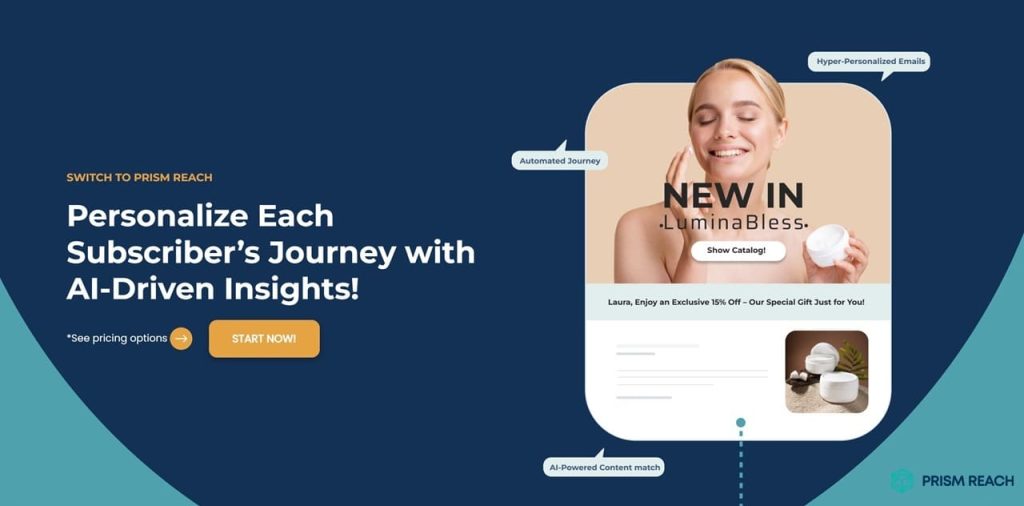
Benefits of Using Prism Reach in Email Introduction Optimization
Integrating advanced tools like Prism Reach into your email introduction strategies can significantly amplify their effectiveness. Prism Reach offers a suite of features specifically designed to enhance personalization, streamline design management, and provide actionable insights that drive better marketing outcomes. Here are three key benefits of using Prism Reach in email introduction optimization:
1. Enhanced Personalization Through AI
Prism Reach utilizes sophisticated AI algorithms to create detailed user avatars based on subscriber behavior and preferences. This level of personalization is crucial for effectively reaching and engaging diverse audiences.
- Tailored Content: AI-driven personalization ensures that each subscriber receives email content that is relevant to their unique preferences and interests.
- Behavioral Insights: By analyzing patterns in subscriber behavior, Prism Reach can predict future actions and tailor email introductions accordingly, increasing the likelihood of positive engagement.
- Cultural Sensitivity: Personalized content respects and reflects the cultural nuances of different demographic groups, fostering a deeper connection with diverse audiences.
Example: A global apparel brand uses Prism Reach to segment its email list based on cultural preferences and purchase history. The AI personalizes each email with culturally relevant product recommendations and messaging, resulting in higher open and conversion rates across diverse markets.
2. Streamlined Design Management
Prism Reach’s ability to automate design processes, such as content discovery, categorization, and distribution, significantly reduces the time and effort required to manage email introductions. This streamlined approach ensures consistency and efficiency in your email marketing efforts.
- Automated Discovery: Prism Reach leverages AI to continuously scan and identify relevant content and design elements, ensuring your email introductions are always up-to-date and aligned with current trends.
- Content Categorization: The platform automatically organizes email introduction content into relevant categories, making it easy to create structured and thematic introductions.
- Seamless Distribution: Prism Reach integrates with your existing email marketing systems to automate the deployment of optimized introductions, ensuring timely and consistent delivery to your subscribers.
Example: A financial services firm uses Prism Reach to automate the creation and distribution of email introductions that feature the latest market insights and investment tips. This automation allows their marketing team to focus on strategic initiatives while ensuring their introductions are consistently packed with valuable and relevant content.
3. Improved Engagement and Conversion Rates
By delivering highly relevant and personalized email introductions, Prism Reach helps boost engagement and conversion rates. Subscribers are more likely to interact with introductions that resonate with their interests and needs, leading to increased loyalty and revenue growth.
- Higher Open Rates: Personalized subject lines and email introductions tailored to individual preferences can significantly increase email open rates.
- Increased Click-Through Rates: Relevant introductions encourage subscribers to engage further with your email content, driving traffic and potential conversions.
- Enhanced Customer Loyalty: Consistently providing valuable and personalized introductions fosters trust and loyalty, making subscribers more likely to stay engaged and convert over time.
Example: An online education platform uses Prism Reach to deliver curated email introductions tailored to each student’s learning path. By providing relevant course recommendations and success stories, they achieve higher engagement rates and an increase in course enrollments.
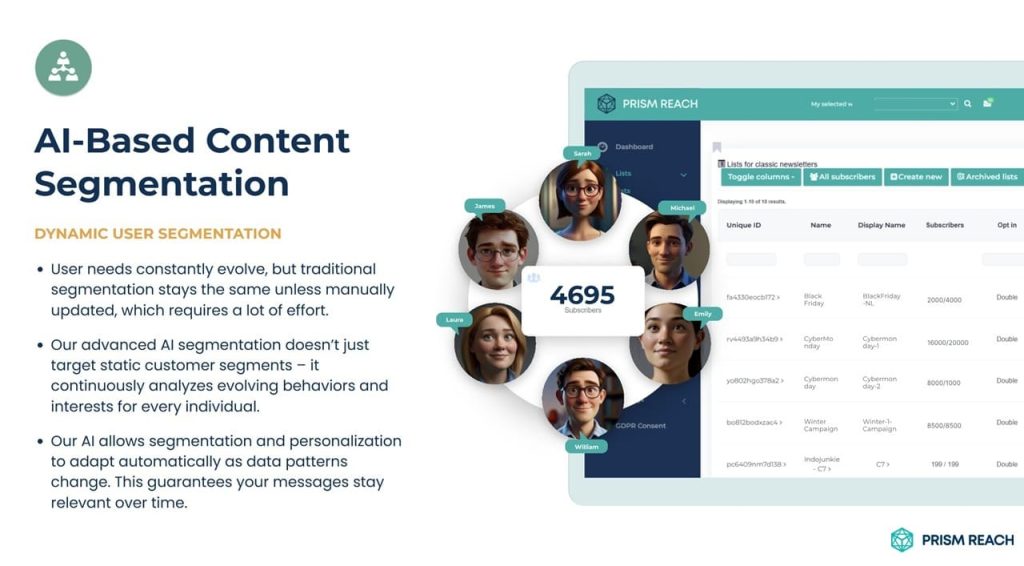
Practical Tips for Effective Email Introductions
To effectively integrate optimized email introductions into your marketing strategy, consider the following practical tips. These strategies will help ensure that your introductions are engaging, relevant, and impactful:
1. Upskill and Reskill
- Continuous Learning: Invest in training programs and courses to develop skills in AI and data analytics, enabling you to leverage tools like Prism Reach effectively.
- Certifications: Obtain certifications in AI-driven marketing tools and platforms to stay ahead of industry trends.
- Cross-Functional Skills: Develop skills that bridge marketing and technology, such as understanding AI algorithms and data interpretation.
2. Foster a Collaborative Culture
- Team Integration: Encourage collaboration between creative teams and data analysts to leverage AI insights effectively.
- Open Communication: Promote open communication about AI tools and their benefits within the organization to ensure smooth adoption and utilization.
- Shared Goals: Align team goals to incorporate AI-driven objectives alongside traditional marketing targets, fostering a unified approach to email introduction design and optimization.
3. Prioritize Ethical AI Use
- Transparency: Be transparent with customers about how their data is being used and the role of AI in designing and personalizing email introductions.
- Bias Mitigation: Regularly audit AI algorithms to ensure they do not perpetuate biases or unfair practices, maintaining fairness and inclusivity in your introduction designs.
- Data Privacy: Adhere to data privacy regulations and implement robust data protection measures to safeguard subscriber information used in personalization.
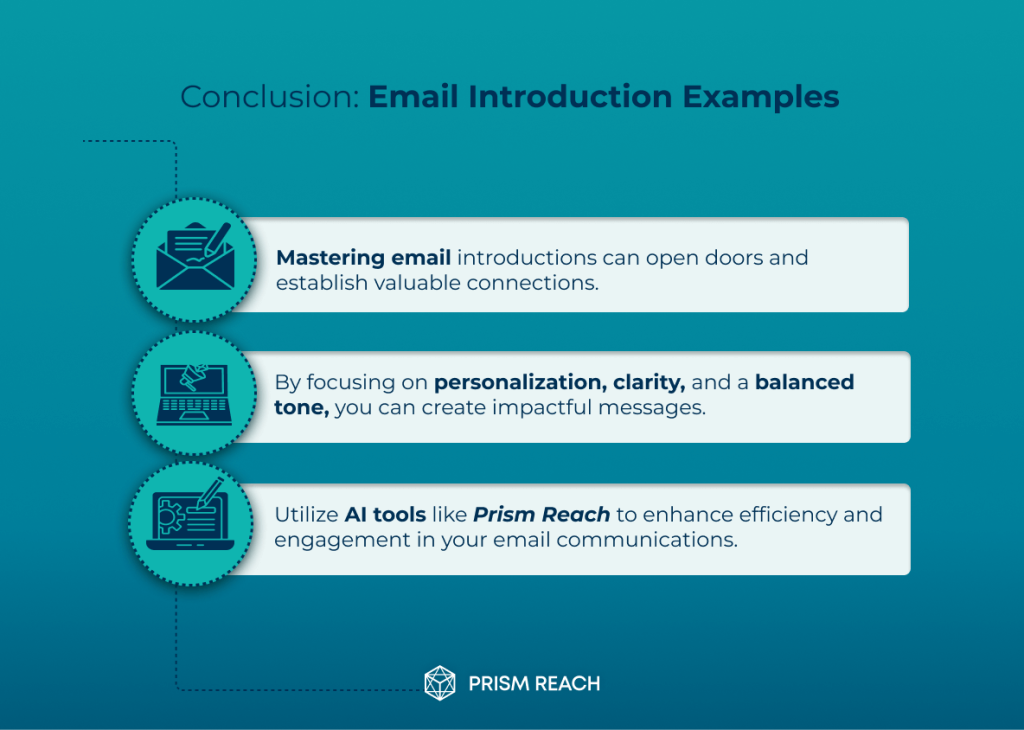
Conclusion
Mastering the art of email introductions is a critical skill for professionals in today’s digital landscape. By understanding the key elements of effective introductions, tailoring your approach to different scenarios, and leveraging the power of AI-driven tools like Prism Reach, you can create compelling and impactful messages that open doors and foster valuable connections.
Throughout this article, I have shared my insights and experiences, highlighting the importance of personalization, contextual relevance, mutual connections, social proof, and setting clear expectations. By implementing these strategies and staying attuned to the evolving landscape of email marketing, you can create introductions that not only capture attention but also drive meaningful engagement and conversions.
Integrating advanced tools like Prism Reach further amplifies these strategies by providing enhanced personalization through AI, streamlined design management, and comprehensive performance monitoring. Prism Reach empowers businesses to create highly personalized and culturally relevant email marketing experiences that resonate with individual subscribers, leading to higher engagement, loyalty, and revenue growth.
Remember to continuously analyze and refine your introduction strategy based on audience feedback and performance data. Stay up-to-date with the latest trends and best practices in your industry, and don’t be afraid to experiment with new tactics and formats to keep your audience engaged.
If you’re ready to take your email marketing to the next level, visit our website at https://prismreach.ai/ to learn more about how Prism Reach can help you achieve your goals. Start delivering the right content to the right people at the right time, and watch your engagement and revenue soar.